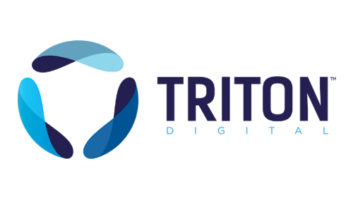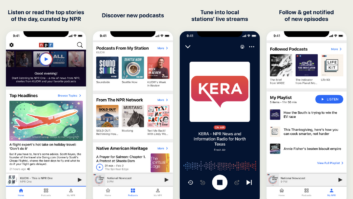It’s Official: NPR and Ibiquity Shake Hands on 6dB Digital Carrier Boost
Nov 18, 2009 5:18 PM
It’s Official: NPR and Ibiquity Shake Hands on 6dB Digital Carrier Boost Seasoned observers of an ongoing debate over maximum acceptable levels of IBOC digital carrier power found few surprises in a Nov. 5 press release from Ibiquity hailing NPR’s decision to sign on to a recommendation that the FCC approve a 6dB increase. With a quick approval by the Commission’s Media Bureau seen as a likely outcome, the question now is whether both parties can remain in synch moving forward.
For NPR’s part, language in the current press release stresses the need to develop new, interference-mitigating applications for HD technology, such as single frequency digital-only gap fillers to address localized coverage issues, along with asymmetrical digital sidebands that protect a short-spaced analog signal one channel above or below. With HD receiver penetration figures still representing a small fraction of total listeners for its member stations, look for NPR to press that research forward, even as it carefully monitors the impact of increased digital carriers across the reserved FM band.
On the other side of the coin, Ibiquity is already on record saying it sees an increase to -14dBc as an interim measure. Even after adoption of a 6dB step-up, that position seems unlikely to change. A sense that time is of the essence is undeniable, because time is money. Commercial radio groups that have committed substantial capital resources to HD technology echo that sentiment: Clearly, they’d like to see an ROI on IBOC tomorrow, if not today. Boosting digital power to -10dBc is seen by both parties as a key step to improve the odds for widespread adoption of the technology.
Obviously, noone involved in IBOC’s lengthy adoption saga desires existing analog listeners to be turned away by digital interference. Both sides have asked that the FCC specify qualifications and procedures to ameliorate interference that occurs when digital carriers exceed -20dBc. But given their diverse missions and priorities, how long the current harmony between these two organizations will hold up regarding digital power and interference issued remains to be seen.
IBOC by State: New Mexico (November 2009)
There are 12 stations in the Land of Enchantment broadcasting 18 HD Radio channels….
DRM Sees Nods from ITU, Boost at Russian Radio Symposium
Among the speakers at a three-day symposium was Russian deputy Minister of Communications Alexander Zharov, who reportedly praised DRM 30 for its spectral and operational efficiency….












